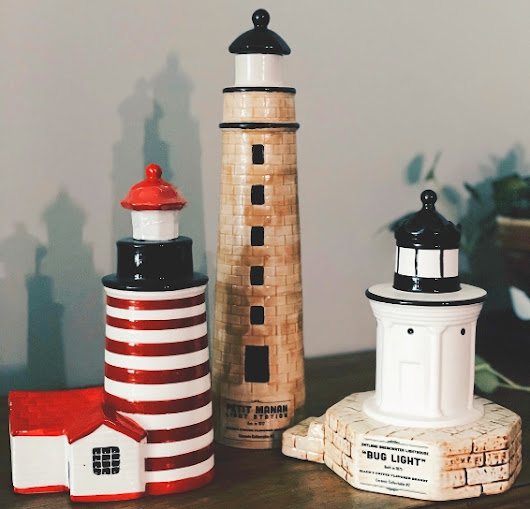Allen's Coffee Flavored Brandy has decided to pull an ace out of its sleeve as it tries to retain its cultural dominance in Maine.
It is now selling its popular coffee-flavored liquor in limited-edition porcelain bottles that pay homage to the state's distinctive lighthouses.
Not too long ago, Allen's had no need to try to offer something special (other than the brandy, of course) to its customer base, which for years consumed the coffee-flavored booze at rates that all liquor makers envied from a distance. Allen's had an unprecedented run as Maine's top-selling brand from the 1990s until recently, outpacing all others by millions of dollars in annual sales.
That changed in 2018, however, when Fireball Cinnamon Whisky eked past Allen's for a total of $10.1 million in sales to Allen's $9.6 million. Since then, Allen's sales have slipped even further and now ranking behind Fireball and Tito's Handmade Vodka. in 2021, Tito's sold the most with $15.7 million in revenue while Fireball had nearly $13 milllion. Allen's was a distant third at less than $8 million.
But the executives at M.S. Walker, the Massachusetts-based firm that created Allen's decades ago, know they still have an advantage in Maine that the national brands don't: it retains a deep identification with the state unmatched by other liquors, even if it is no longer the top seller.
During its long stretch of sales dominance in Maine, Allen's sales in other states paled in comparison and, outside New England, they didn't exist at all. The company has long embraced its "Champagne of Maine" nickname and on its website proudly promotes the product as "a Maine tradition."
The lighthouse series clearly aims to build upon that. By issuing a different Maine-specific, collector's-edition lighthouse bottle run each year (three more are planned, including one later in 2023), Allen's can charge more for a bottle of brandy and at the same time remind liquor lovers that Fireball (which actually is made in Maine) and Tito's and all others cannot provide their customers with a uniquely Maine experience the way that only Allen's can. In other words: It's a cunnin' move.
M.S. Walker has yet to say which lighthouse it will pay homage to this year, but there are a few candidates that come to mind: Bass Harbor Head Light? Portland Head Light? Boon Island? Owl's Head? Goose Rocks? Seguin? All would be good choices.
But -- without any inside information -- I'm going to place my money on Pemaquid Point. It is definitely one of the more recognizable lights in the state, and it will add a midcoast beacon to the list of those honored by Allen's. And it will look great on the shelf in my kitchen.














